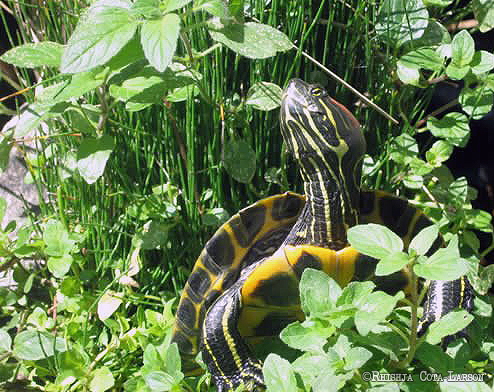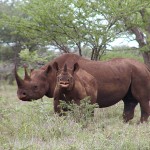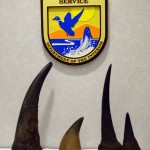The U.S. is one of the world’s largest turtle biodiversity hotspots. But for how much longer?
It has more turtle species than any other country in the world — for now.
Many of them are being targeted for both legal and illegal trade in East and Southeast Asia (especially in China), where native terrapin populations have already been largely depleted.
Experts say they’re being removed from the wild at unsustainable levels.
In a 2011 Environmental News Service (ENS) article, herpegologist, Dr. Anders Rhodin, explained that insatiable demand for turtles and tortoises for food, traditional “medicine”, and pets, combined with ongoing habitat loss and destruction, are at the core of the problem.
“They’re being unsustainably collected from the wild for food, perceived medicinal beliefs and pets, while their habitats are being polluted, degraded and destroyed every day,” Dr. Rhodin said.
Are U.S. species a turtle trade cash cow?
After depleting native turtle and tortoise populations, East Asian consumers apparently now acquire the 220 million year-old reptiles from elsewhere in the world.
Herpetologist, Dr. William McCord, traveled to mainland China in 1997 to expose the extent of the turtle trade and estimated that around 90% of the animals in live markets were from outside the country, according to the Scientific American report.
Over the years, an alarming number of the animals have been exported to the East Asia from the US.
An estimated 25 million turtles were exported from the US to foreign markets for food and pet trade between 1993 and 1997, according to turtle expert, John Behler.
The New York Times said that by 1995, the average number of turtles shipped out from the US annually was between five and forty times what they were in 1990 (depending on the species) — and most of them were sent to Asia.
Since then, these numbers have only grown.
In fact, for some species, the number exported has at least doubled, or has nearly doubled, every year since the turn of the millennium.
The World Chelonian Trust reports that documented turtle exports from the US between 2002 and 2005 totaled 31,783,380 individuals of various North American species.
The International Union for the Conservation of Nature (IUCN) said that well over 558,000 snapping turtles were exported to East Asia from the US in 2008 alone — sourced from both the wild and from “turtle farms” — a more than 430% increase from the number shipped out only five years earlier.
Keep in mind that this is only the amount that was actually documented — unregulated, illegal exports are obviously unaccounted for.
HerpDigest‘s Allen Salzberg said that a decade ago, importers from Hong Kong began contacting anyone they found on the internet that was associated with turtles, asking if they could obtain and send large numbers of adult snapping turtles.
Indeed, it seems the surging demand is very much reflected in the annual export figures.
North America is considered a turtle biodiversity hotspot, holding nearly 20% of all known turtle species in the world, according to the experts who wrote the 2011 “State of the Turtle” report.
As the US is home to more native turtle species than any other country around the globe, it’s easy to understand why this area would be targeted by the East Asian consumer markets.
Asia’s insatiable demand for turtles and tortoises
As with so many other endangered species, the flesh and body parts of turtles and tortoises are in high demand in East and Southeast Asia, especially in China and Vietnam.
There, they are consumed as delicacies, for perceived “health benefits”, and are also used to make traditional “medicines”.
But these time-honored traditions are only steeped in superstition and lack any scientific evidence to back the medicinal claims being made about turtles and tortoises.
Mature, wild-caught turtles are especially popular in Chinese markets, where consumers widely believe that they will be bestowed with wisdom, health, or longevity if they eat the reptiles.
Others believe some species — such as the critically endangered “Golden Coin Turtle” — bring good luck and can even cure cancer.
While these practices may have been sustainable long ago, new wealth and an exploding human population have created a highly lucrative market that has depleted entire populations of turtles and tortoises, according to Scientific American.
Since the ’80s, the demand has only grown larger and larger.
In 1997, Peter Paul van Dijk (Director of the Conservation International’s Tortoise and Freshwater Turtle Conservation Program), explained on The New York Turtle and Tortoise Society website that “what had been a barter trade has become a cash-fueled import to a vast and increasingly wealthy market”.
Herpetologist, Dr. Steven Platt, told The New York Times that “it’s a status symbol to serve turtle meat”, adding that “it’s not cheap”.
TRAFFIC’s Craig Hoover discussed the unbelievable volume of turtles circulating black markets in the 1999 Scientific American article, which also pointed out that this, as well as the types of turtles being targeted, are what makes the trade so unsustainable.
“The problem we have now with the turtle trade is the sheer volume,” says TRAFFIC’s Craig Hoover. “There’s a shipper in Indonesia who has a standing order for one ton of turtles a day to send to China. There’s a turtle dealer in the U.S. with a standing order of at least one ton of turtles per week to be sent to China.” The rate, researchers say, is unsustainable — particularly because the turtles being taken are the mature animals, those few who have made it through a dicey infancy and subadulthood to become reproductive stock.”
The demand is prevalent in Asian communities abroad, as well — this shocking video was captured at a Chinese food market in California and shows a living, breathing turtle displayed for sale, after having its upper shell (carapace) painfully sliced off to expose its internal organs.
(**WARNING: The video is extremely graphic and could be disturbing to sensitive viewers.**)
Image ©Rhishja Cota-Larson





